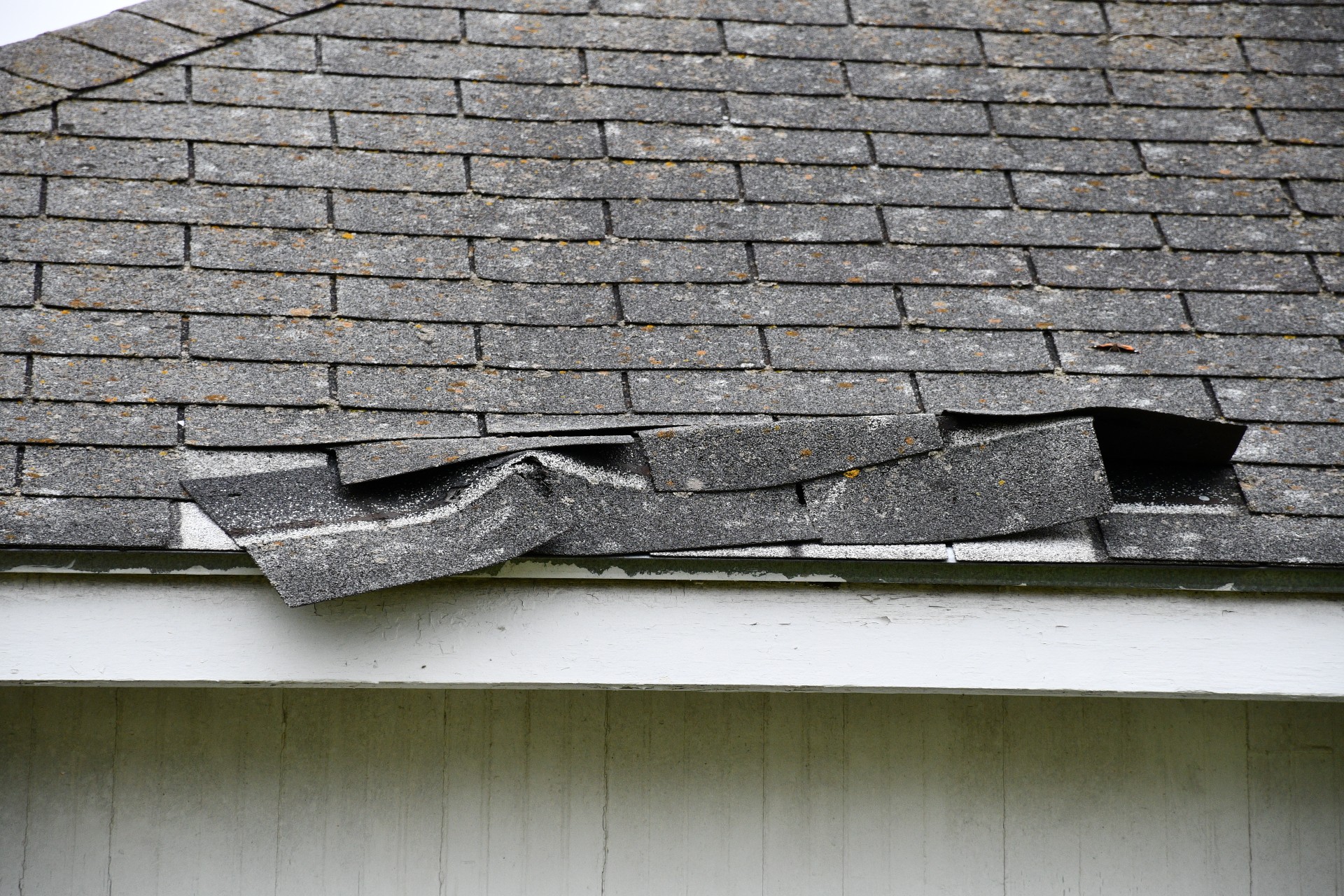Knowing when to replace shingles depends on several factors, including the type of shingles, their age, and the extent of damage or wear. Here are some general guidelines for when to consider replacing roofing shingles:
- Age of Shingles: Asphalt shingles typically last about 20-30 years, while other types like metal or slate shingles can last much longer. If your shingles are nearing or exceeding their expected lifespan, it’s a good idea to start considering replacement.
- Visible Damage: Inspect your roof regularly for signs of damage such as curling or buckling shingles, missing shingles, cracked or broken shingles, or granule loss. These are indicators that the shingles may need replacement.
 Leaks and Water Damage: If you notice water stains on your ceiling or walls, or if there are leaks in your attic after heavy rain, it could be a sign that your shingles are failing and need to be replaced.
Leaks and Water Damage: If you notice water stains on your ceiling or walls, or if there are leaks in your attic after heavy rain, it could be a sign that your shingles are failing and need to be replaced.- Moss or Algae Growth: Excessive moss or algae growth on your shingles can indicate moisture retention, which can lead to shingle deterioration. If cleaning doesn’t solve the problem, it may be time for new shingles.
- Energy Efficiency: Older or damaged shingles may contribute to energy loss, leading to higher heating or cooling costs. Upgrading to energy-efficient shingles can improve insulation and save energy.
- Roofing Inspection: It’s recommended to have a professional roofing inspection every few years to assess the condition of your shingles and identify any potential issues early on.
- Local Climate: Extreme weather conditions, such as high winds, heavy snowfall, or intense sunlight, can accelerate shingle deterioration. Consider the climate in your area when determining the lifespan of your shingles.
If you’re unsure about the condition of your shingles or when they should be replaced, consulting with a roofing professional can provide you with a more accurate assessment and recommendations.

 Facebook
Facebook
 X
X
 Pinterest
Pinterest
 Copy Link
Copy Link

 Leaks and Water Damage: If you notice water stains on your ceiling or walls, or if there are leaks in your attic after heavy rain, it could be a sign that your shingles are failing and need to be replaced.
Leaks and Water Damage: If you notice water stains on your ceiling or walls, or if there are leaks in your attic after heavy rain, it could be a sign that your shingles are failing and need to be replaced.